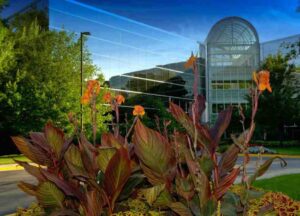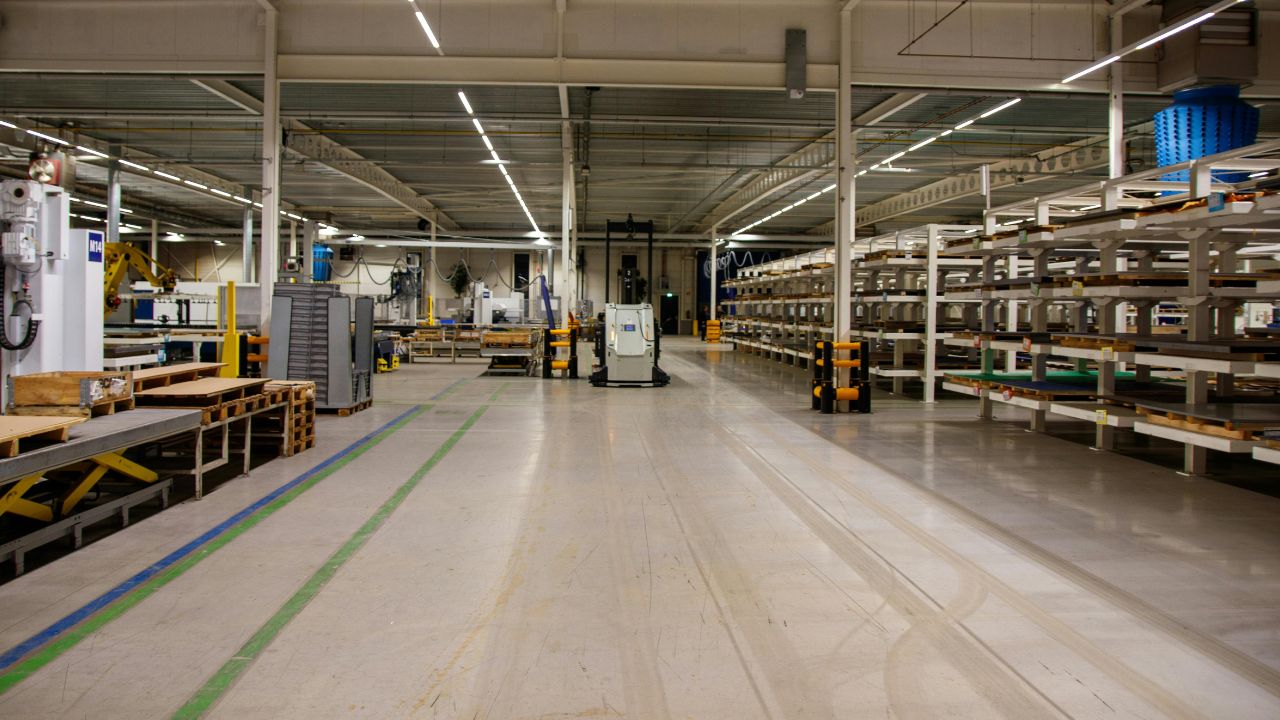How to Integrate Sustainability into Commercial Landscaping
Commercial landscapes are often designed for aesthetics, but what if they could do more? What if your property’s green spaces reduced costs, conserved water, and actively contributed to a healthier environment? Sustainable landscaping isn’t just a trend—it’s a smart business decision that improves efficiency, lowers expenses, and future-proofs properties against environmental challenges.
Green spaces around commercial properties do more than enhance curb appeal. Well-planned landscapes reduce energy costs, improve air quality, and contribute to stormwater management. A shift toward sustainable methods in commercial landscaping is not just about environmental responsibility—it’s also a practical response to increasing regulatory pressures and rising maintenance costs.
Replacing Water-Intensive Lawns with Native Plants
Grass-dominated landscapes require constant mowing, watering, and fertilization. Many commercial properties still rely on expansive lawns, despite their high maintenance demands. Native plants, ground covers, and xeriscaping provide alternatives that require far less water and upkeep.
- The EPA estimates that 50% of outdoor water use is wasted due to inefficient irrigation systems. Replacing traditional turf with native plants can significantly cut water consumption.
- Drought-resistant plants like succulents, wildflowers, and ornamental grasses thrive in local conditions with minimal watering and fertilization.
At an office complex in the Southwest, the decision to remove traditional turf grass led to the installation of a native wildflower meadow. Besides reducing irrigation needs, the meadow attracted pollinators and provided seasonal interest without constant trimming. The upfront cost of installation was offset within two years due to lower maintenance expenses.
Smart Irrigation and Rainwater Management
Water scarcity is a growing concern, and outdated irrigation systems contribute to excessive waste. Many commercial properties still rely on fixed-timer sprinkler systems that run regardless of weather conditions. Smart irrigation controllers adjust watering schedules based on rainfall, humidity, and soil moisture levels, eliminating unnecessary usage.
- A retail shopping center that installs a drip irrigation system can cut water consumption by 60%. Instead of spraying large areas where much of the water evaporated, the new system delivers moisture directly to plant roots.
- Rain sensors integrated with irrigation systems prevent overwatering by automatically shutting off during wet conditions.
- Bioswales and rain gardens help control stormwater runoff, filtering pollutants and reducing flooding risks.
Parking lots, sidewalks, and rooftops create runoff that carries pollutants into local waterways. Green infrastructure solutions, such as bioswales and rain gardens, slow and filter this water naturally. A business park integrated permeable pavers into its walkways, allowing rainwater to seep into the ground instead of flooding storm drains. Within a year, drainage issues disappeared, and the outdoor space became a more inviting place for employees to gather.
Reducing Chemical Dependency with Healthier Soil
Synthetic fertilizers and pesticides have long been the standard in commercial landscaping, but their environmental impact is hard to ignore. Runoff from chemically treated lawns contaminates nearby water sources, and overuse of synthetic products depletes soil health over time. A more sustainable approach involves organic soil amendments, composting, and integrated pest management (IPM).
- Introducing compost tea and organic mulch, soil quality improved, reducing the need for constant fertilization.
- Cover crops and mycorrhizal fungi promote better nutrient retention, reducing runoff and increasing plant resilience.
- A corporate headquarters that adopts organic landscaping methods can experience a 25% drop in plant replacement costs due to improved soil structure.
Some commercial properties incorporate cover crops or mycorrhizal fungi to enhance soil structure. These practices promote better nutrient retention, reducing runoff and increasing plant resilience. At a corporate headquarters with extensive green space, adopting these methods led to fewer plant replacements and a noticeable improvement in soil texture.
Switching to Energy-Efficient Equipment
Traditional maintenance equipment, including gas-powered mowers and blowers, contributes to noise and air pollution. Many commercial landscaping teams have started adopting battery-operated alternatives to cut emissions and reduce noise complaints.
- Shrubs that maintain their shape naturally eliminate the need for constant pruning, reducing energy-intensive maintenance.
- Solar-powered lighting in pathways and green spaces reduces electricity costs while improving security.
Another way to minimize energy usage is to design landscapes that require less intervention. Ground covers reduce the need for mowing, and slow-growing tree varieties limit trimming requirements.
Incorporating Edible and Multi-Functional Plantings
Sustainable landscaping goes beyond aesthetics. Some commercial properties integrate edible gardens, fruit-bearing trees, or medicinal plants into their designs. These elements provide additional benefits, from reducing food miles to creating engaging spaces for employees and visitors.

Long-Term Cost Savings and ROI
Many commercial property owners hesitate to embrace sustainable landscaping due to perceived high upfront costs. However, long-term savings often outweigh the initial investment. Lower water bills, reduced maintenance expenses, and potential rebates for eco-friendly upgrades all contribute to financial benefits. Green roof installations qualify for rebates and tax credits in many cities, offsetting initial costs.
Practical Steps for Implementation
Many property managers assume that sustainable landscaping requires an all-or-nothing approach. Small adjustments over time often yield the best results. Replacing a portion of turf with native plant beds, upgrading to a more efficient irrigation system, or switching to organic fertilizers can make a significant difference.
- A mixed-use development phased in sustainable landscaping changes one section at a time, allowing for gradual adoption and cost savings.
- Partnering with experienced landscape professionals who specialize in sustainability helps businesses create customized, effective solutions.
National Facility Contractors provides commercial properties with sustainable landscaping solutions designed to reduce costs, improve efficiency, and enhance environmental responsibility through tailored, high-impact strategies.
Final Thoughts
A commitment to sustainable landscaping benefits commercial properties in multiple ways. Water conservation efforts lead to lower utility costs, native plants create resilient ecosystems, and organic soil management fosters long-term plant health. Energy-efficient equipment and maintenance practices reduce environmental impact while improving efficiency.
Small changes often set the stage for larger transformations. A single switch to drought-resistant plants, a minor irrigation upgrade, or a decision to use organic fertilizers can lead to significant cost savings and environmental benefits over time. Businesses that integrate these practices not only reduce their operational expenses but also contribute to a healthier, more sustainable future.






